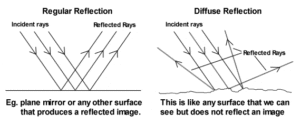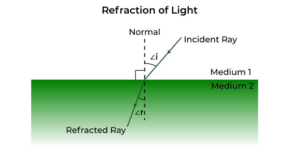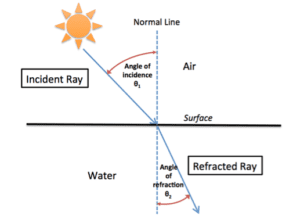In this short piece of article, we will discuss the cartesian sign convention for spherical mirrors. So let’s get started…
Cartesian sign convention for spherical mirrors
Here are the sign conventions commonly used in the Cartesian sign convention for spherical mirrors:

Principal axis
The central line passing through the vertex (V) of the mirror is considered the reference line for all measurements.
Nature of distance measured
- All distances are measured from the pole of the mirror.
- All distances measured in the direction of the incident ray is taken as positive.
- All the distance measured in the direction opposite of the incident ray is taken as negative.
Object distance (u)
- Positive when the object is on the same side as the incident light and the light rays are traveling toward the mirror.
- Negative when the object is on the opposite side as the incident light and the light rays are converging toward the mirror.
Image distance (v)
- Positive when the image is on the same side as the outgoing light and the light rays are diverging away from the mirror.
- Negative when the image is on the opposite side as the outgoing light and the light rays are converging toward the mirror.
Focal length (f)
- For a concave mirror, the focal length is considered negative, indicating that the focal point is located on the same side as the incident light.
- For a convex mirror, the focal length is considered positive, indicating that the focal point is located on the opposite side as the incident light.
Object height (hₒ)
- Positive when the object is above the principal axis.
- Negative when the object is below the principal axis.
Image height (hᵢ)
- Positive when the image is above the principal axis.
- Negative when the image is below the principal axis.
These sign conventions, when applied consistently, allow for accurate calculations and analysis of optical systems involving spherical mirrors.
Read More:
- Behaviour of light at the interface of two media
- Optics: definition, types, and applications, class 12
- Simple microscope Class 12, Definition, Magnification, working, Parts And Uses
- Reflection of light class 12: definition and types
- Spherical mirrors: definition, types, and terminologies
Stay tuned with Laws Of Nature for more useful and interesting content.
Was this article helpful?
YesNo








